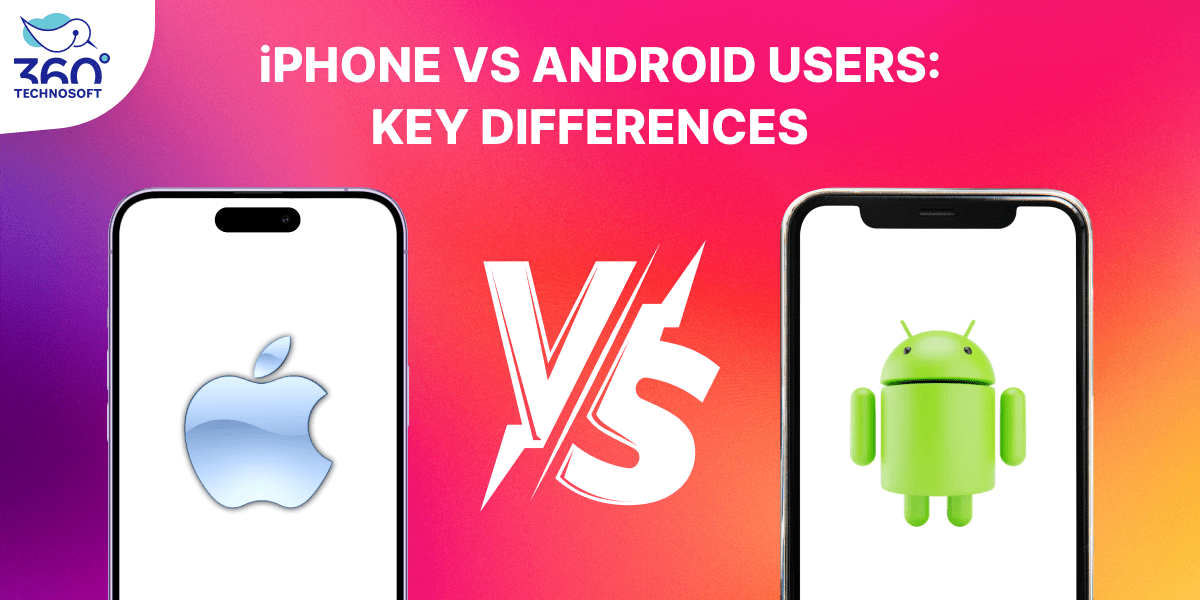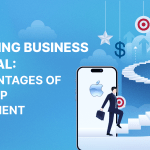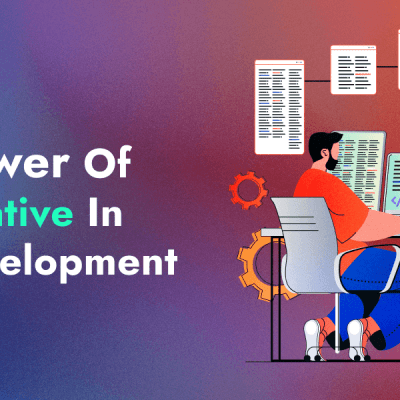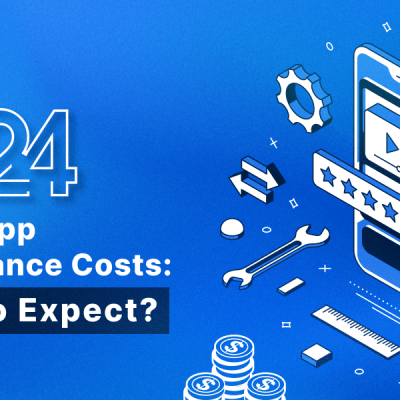The battle of the best keeps on outdoing every year for both these industrial technology giants. Regardless of which side you support, these devices have indubitably dominated the world of technology since their inception and are only getting started.
You ask us which side we are on. Both! Since both of them have their epithets allowing room for much competition and similarities too.
So the question that matters is, which side are you on? Team Android or Team iPhone? Well, there is no need to rush on that decision if you cannot decide on one.
The article below will help you identify the key differences between them and keep you guessing the better version to use. So make sure to read along as we unravel both their traits and display them unfiltered to you.
iPhone vs Android Users’ Statistics
Before we get into the meat of the discussion, let’s take a look at what the numbers say.
Below are a few statistics about both iPhone and Android that can quantify most of this article:
The most recent stats suggest that the iPhone has a total market share of 45.8 percent of the market as of July 2023.
The majority of Gen Z and Millennials prefer the iPhone over Android in the US. 47% of the former Android audience claims the iPhone provides a better user experience.
However, 29% of the former iPhone users in the US state that Android is much more affordable.
iPhone Users vs Android Users: Market Share Statistics in the United States
As we understand from the data provided above, the iPhone is the more popular choice for users in the market than Android in the US. It has led the US market since 2009.
2011 is the only year when Android came close to beating the iPhone in terms of market share. The data below will offer insights into the market share for mobile technology from 2009 to the present in the US.

iPhone vs Android Users Global Market Share
The USA is the only part of the world where iOS dominates like no other OS. The remaining parts (except for a few countries) find Android much worthier and preferable to iPhone. Globally, Android controls two-thirds of the mobile OS market.
The countries where iPhone dominates more than Android besides the USA include Japan (68.86%), Australia (59.63%), Canada (60.31%), and the United Kingdom (52.29%).
Metrics & Stats Source [ exploding topics ]
Android covers more ground in countries like India where it encompasses a staggering (95.16%), Brazil (81.45%), Mexico (77.46%), and China (74.76%).
Below is the data for global market share for Android vs iOS:

iPhone vs Android- A Comparison
A step-by-step distinction can be made to compare the major aspects of these two devices to determine which one would be the best for your business or even personal use. You will find the comparison listed below:
User Interface
Android follows the Material Design concept while Apple follows the Flat Design principle. Android gadgets follow material design outlines while Apple follows human interface instructions. The flat design imitates real-life objects using 3-D iconography.
The background in Material Design acts as a paper sheet and the UI elements along with their behavior imitates the paper’s capability of being cut and re-arranged together.
Below is a clear distinction between iOS and Android based on User Interface:
| Aspect | Android | iOS |
|---|---|---|
| Design Rules | Material Design language | Flat Design rules |
| Key Guidelines | Google’s Material Design Guidelines | Apple’s Human Interface Guidelines |
| Focus on Elements | Shadows and movements for navigation simplicity | Flat design with less shadowing and layered elements |
| Typography | Not explicitly mentioned | Emphasis on clarity, user-oriented content |
| Title Placement | Titles are often placed on the left | Titles often centered |
| Design Philosophy | Improvement of flat design with a touch of skeuomorphism | Emphasis on clarity, deference, and depth |
| Resources for Designers | Material Design Guidelines, Components, Icons | Design Resources for Photoshop, Sketch, Adobe XD |
Ecosystem Integration
A lot of elements in both Android and iOS differ based on the OS ecosystems that are integrated within them.
Apple approaches such integrations with a walled garden method concerning iOS security structure and its other operating systems.
This implies that Apple evaluates any external hardware through stringent standards before allowing them to access the iOS. Additionally, only Apple devices can natively access iOS.
As opposed to iOS, the Android OS is an open-source ecosystem that can run on multiple types of devices.
This implies that developers can utilize the source code to develop different applications to improve them and streamline them around their devices.
Such changes can critically alter and impact other parts of the device’s performance and management.
App Stores
When it comes to the library of apps, Google’s Play Store and Apple’s App Store represent Android and iOS respectively.
You can install more than 2 million apps that are available on the App Store. It was introduced in 2008 and has evolved to become one of the most popular app stores in the world.
It is known for its rigorous and sophisticated app review process that ensures the approved apps are of the finest quality and do not include any harmful software.
Google Play Store, on the other hand, is Android’s leading app store as it offers access to a whole range of software containing games, entertaining apps, and productivity tools. It harbors more than 2.7 million apps in its library that are available for downloads.
These app stores are significant in app ecosystems since they provide customers with a centralized platform to search, purchase, and install mobile apps.
Users can pick the ones according to their preferences along with the app stores they want to choose their apps from since all of them have their own merits and demerits.
Hardware Components
Initially, both Apple and Google had polarizing hardware designs for their mobile phones. iPhones were slim while Androids encompassed more functionality and less outlook.
However, nowadays both these devices look similar. They comprise large and high-definition screens. Both of them also constitute tremendous battery life and storage.
The battery for both these devices can harbor more than 2000 milliamp-hours (mAh) allowing a whole day of usage or more without having to charge.
The iPhone devices contain a range of models each one made for different user preferences as well as budgets.
Apple makes sure that its devices never fall short in performance and updates, along with offering a seamless user experience.
Android, on the other hand, holds multiple offers from different manufacturers. Such a versatile variety allows users to pick from a range of sizes, features, and designs.
The quality of Android devices ranges from cutting-edge specifications to budget-friendly options. There is also expandable storage along with headphone jacks and other user-specific requirements that Android provides.
User Demographics
User demographics play a crucial role in dividing the masses of the mobile market between iPhone and Android. It offers you a third-person view of the mobile OS dynamics. Such a multifaceted category comprises income, education, age, gender, and frugality.
Income, Education, and Frugality
Android works wonders for people in lower-income areas as well as developing countries. iOS users, on the other hand, identify with characteristics such as higher income, enhanced engagement, and better education standards, and spend excessively on each app.
Studies suggest that the majority of Android users are likely to be middle class and iPhone users are more often than not, upper-middle class.
This is because the social, economic, and political disparities are responsible for realigning the cash inflow and expense splurging of a country. These inputs facilitate app monetization strategies.
Age and Gender
The data below will show you that men are more likely to utilize iOS than Android while it is the opposite in the case of women.
Android is the most common platform across all generations and its benefits slightly fall shorter than iOS in the 65+ age category.
Studies suggest that the majority of Android users are likely to be middle class and iPhone users are more often than not, upper-middle class.
This is because the social, economic, and political disparities are responsible for realigning the cash inflow and expense splurging of a country. These inputs facilitate app monetization strategies.
Brand Loyalty and Satisfaction
iPhone users are more loyal to their brand than Android users. Hence, Apple has always taken pride in its customer loyalty.
Android, on the other hand, is not that far behind either since the apps provided by Google are a lot to pick from that run seamlessly and offer longer trial periods.
Some of the key takeaways when it comes to brand loyalty and satisfaction in the case of iOS and Android users are:
- 94% of iPhone users are more likely to stay loyal to their brand than 80% of Android users are loyal to theirs.
- 33% of company managers are more likely to be iPhone users. 63% get along better with their employees who also utilize iPhones.
- If ‘X’ were removed from the App Store, 60% of iPhone users would switch to Android.
In the US, Apple forms the crux of smartphone users who are loyal to their brand. Over there, 18% of iPhone users are more loyal to their brand than Android users.
72% of the iPhone users established the fact of being happy with their current model against 66% of the Android users. One of the reasons for this can be the variety of devices that Apple runs seamlessly with along with the company’s third-party integrations.
Metrics & Stats Source [ patently apple ]
Why is Android more popular globally, and iOS in the US?
Due to its open-source groundwork, Android dominates the global market share.
The Android ecosystem survives on diversity and adaptability, spanning different smartphone manufacturers. Its vast and outspoken popularity is a testament to its user flexibility and choice.
On a global scale, Android undeniably dominates, commanding an impressive 70.89% share of the market and solidifying its position as the world’s most widely used mobile operating system.
The following stats make Android the undisputed leader of the global market share and its dominance in the smartphone industry.
It had a growth rate of more than 67% from 2009 to 70.27% in 2023, which implies that its dominance in the smartphone globally remains untouched.
Although Google emerged as the winner in most of the countries around the world, the iPhone stands tall in specific regions.
Its strength can be observed in the US with 57.39% quarterly market share for iOS. This number declares Apple as the clear alpha in the smartphone market in the US. Moreover, the yearly market share of iOS in the US is about 58.34% which ascertains Apple’s consistent reign in the market.
Metrics & Stats Source [ RST Software ]
Conclusion
It has become significant for startups and multinational companies to implement mobile apps for the seamless functioning of their business.
As a result, the above information must be enough for you to understand where to invest and start a new business according to your company’s needs and requirements.
Your target market is likely enough to fit under two categories- Android or iOS. However, it is also possible for your product to not flourish on either of these platforms and shine on some others.
In this case, your application will go through cross-platform development which allows the user to access the application regardless of the platform your app has been tailor-made for.
Frequently Asked Questions (FAQ)
1. What are a few features that Android has but not an iPhone?
Some of the amenities that you can enjoy on Android but not your iPhone are the creation of a guest mode account on it to share it with other Android users. Widgets can also be used to pull information from apps without even releasing them, storage can be added through an SD card, split-screen multitasking, and using an Android file manager that allows transferring documents from a PC to a phone. You can only transfer media in this way on an iPhone.
2. What are a few features that an iPhone has but not an Android?
The QuickStart feature in iPhone allows you to hold your old phone against your new one to transfer all the files and information. The in-built iPhone Messages app allows you to transfer money through a service that is exclusively made for your transactions. FaceTime allows you to video conference with other iPhone users without downloading any third-party app.
3. Why do people in the US prefer the iPhone over Android?
iOS is more beloved in the US because of its superior support. AppleCare might sometimes seem expensive, however, Apple’s local retail stores provide the best services at a reasonable price. You can also buy a brand-new iPhone in no time. This is why the iPhone is more beloved than Android in the US.
4. Which is more user-friendly: iPhone or Android?
iPhone is quite famous for consisting of a simple and intuitive user interface while Android provides a more customizable and personalized experience. The iPhone also has quite a consistent UI across all of its devices. Android on the other hand has a flexible, tailored to suit its user needs UI.
Gopal Rathod
I am not just hooked on using mobile apps for my smallest errand but hooked on learning the mechanisms behind them and developing them. I am a mobile app developer who likes to learn and write about emerging technology like ML, AI, chatbots, and all development platforms and frameworks.






